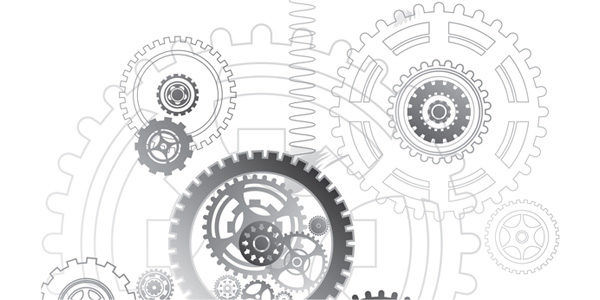Six steps to a successful retrofit

Even the best run, most modern, most productive distribution centers have a life cycle. Equipment ages; newer, faster, better technology comes along; or the business changes and with it, the demands on the DC. Eventually the day comes when it becomes apparent to all concerned that an upgrade is in order if the operation is going to stay competitive.
Although some companies take that as an opportunity to move to a newer, more up-to-date facility, that's not the only option. Another alternative is to retrofit the existing DC, replacing older equipment with modernized parts or systems.
But a retrofit can be daunting, with the potential to interrupt business operations. So we asked some experts who oversee retrofits for a living for tips on getting it done with minimal disruption. Here's what they suggested:
Find a partner. Certainly, specialists in DC retrofits have a vested interest in touting their capabilities. But they make a cogent point in urging clients to find partners who are familiar with the process to help with design and implementation issues.
Who that partner is depends on the scope and scale of the project, says Seth Taylor, a director for the consulting and systems integration firm Fortna. "You want to make sure you partner with the right people, people who do this for a living," he says. "You want them providing a thorough analysis of the existing facility and planning how to get the job done. Not all companies are set up to do retrofits. It is a bit of an art, and mastery of that art comes from experience."
Keep the entire business involved. "The facilities I've seen be successful take an all-in approach," Taylor says. "They bring all facets of the business into the planning and execution. Any part of the business that will be affected needs to have a member on the core team." That could include DC management and line personnel, maintenance, engineering, human resources, IT, and sales and marketing.
Taylor also stresses the need for ongoing communication throughout the process. Keeping all parts of the business informed about what will occur during the implementation of each phase, what the risks are, and the expected outcome can help build support throughout the organization, he says.
External clients also should be kept in the loop, so they are not surprised by any changes in business processes that result from the retrofit. Taylor notes that these project updates can be parlayed into a marketing tool. "It's another touch for the customer, letting them know you are improving the business," he says.
Plan, then plan some more. A retrofit requires detailed step-by-step planning in order to succeed. That includes figuring out in great detail what mechanized systems will be used, the number of pick faces needed, how many SKUs the system will manage, the order picking process, and more, says Bob Babel, vice president, systems engineering for Forte, another consulting and systems integration specialist. He adds that it's crucial to examine not only how the business has changed since the existing facility began operations—is the DC shipping smaller and more frequent orders, for example—but also what changes can be expected over the life of the retrofit. That's particularly important for businesses that are moving into e-commerce. "That's a different scenario than expanding capacity to continue what you've been doing for years," he says.
Babel also urges managers to keep the possible need for further expansion in mind when planning a retrofit. For example, he says, if future expansion might include an addition at one end of the DC, the material handling system should be designed to accommodate that. "We try to anticipate with the client what might be the next move," he says.
Taylor adds that while careful and diligent planning is a necessity, companies should also be prepared to depart from their plans if necessary. "Retrofits are ugly, they are hard, and you always have something go wrong," he says. "You have to be able to modify plans in order to succeed."
Draft your plan with an eye toward minimizing disruption. It's rare that a DC has the luxury of a planned one- or two-week shutdown that might simplify a retrofit. In most cases, Babel says, you have to maintain service levels and commitments to customers, while simultaneously installing new systems around the existing operation.
That's not easy. "The analogy I always use is heart surgery," Taylor says. "To keep the business alive, you need a full plan, you need to educate everybody, and you need all the tools you envisioned needing. You need a document that outlines every facet of the plan. You need to have multiple meetings prior to any cut-in."
Babel uses a different analogy to make a similar point. He compares the implementation to a game of chess, with careful coordination of how each of the pieces moves. Babel adds that implementation is particularly difficult in three-shift operations. That, he says, requires implementing the retrofit in smaller chunks.
Taylor concurs with that advice. "One of the biggest mistakes I've seen is the tendency to bite off more than you can chew," he says. "You need to make sure you can do what you plan, but at the same time you don't want to extend the schedule out."
To minimize disruption, companies often build new systems alongside existing systems, Babel says. As an example, he cites one of Forte's customers, an office supply company, that revamped all of its 30-plus DCs, including eight complete retrofits. "We built the automated system around the non-mechanized system, and replaced aging controls and equipment. We built the sortation system slightly above and behind the existing systems, then cut over during the weekend," he says. As a result of careful planning and implementation, he reports, none of the facilities lost any time.
Babel says Forte took a similar approach with a retail apparel company whose whole operation involved a push strategy—shipping its fashion goods, held for a single season, out to 500 stores. To avoid interrupting operations, he says, Forte literally set up a separate area to serve the stores during the changeover. "We devised a way to build mezzanines over the existing packing operation, then we automated the packing operation and the sortation of individual cases, and installed a put-to-light system," he says. "After that was up and running, we retrofitted the existing area."
Test and train. Taylor emphasizes the importance of testing not only components as they are installed, but the entire system. "Sometimes software can be funny in the way different portions of the system can be affected," he warns. "You have to validate the whole system and make sure you are ready to go."
Another crucial piece of the implementation is preparing those who will work with the system. "You want to make sure your operators are fully trained," Taylor says. That's partly because you want employees to look forward to the change, rather than dreading what's to come, he notes. But it's also a matter of readiness. "You need to be ready to go when you go live with the tie in."
Taylor says in one of the most successful retrofits he has worked on, the company spent a substantial amount to send operators to a different facility to learn the technology. "Although it required a large investment," he says, "the DC became the company's second most productive facility on day one."
Manage the handoff. "Handoffs are always interesting," Taylor says. "You want to plan them." He tells of one client that implemented a new warehouse control system, shifted from paper picking to an RF system, and made other operational changes—and then implemented it all in the course of a single weekend. "They affectionately called it the Big Bang," he says. "It took a long time to plan. The only way to make it work without a shutdown was by a managed transition.
"We never just pack up our tools and leave," he adds. "The idea is to make sure they need you as little as possible. The idea is for them to want to take the system and go."
In less than three decades' time, Ikea has grown into one of the largest mass-market home furnishings retailers in North America. The company opened its first store in the United States in 1985 and now operates 37 here and 11 more in Canada.
Much of Ikea's success is based on offering goods at a relatively low cost, which means the retailer must do everything it can to keep its own costs in check. For instance, when it set up its distribution network, it built a system that matched its current needs but that could also grow with the company.
That foresight paid off a few years back when the retailer went to expand its DCs in Perryville, Md., and Bakersfield, Calif. When originally built, the two facilities, the biggest in Ikea's six-DC U.S. network, each occupied 850,000 square feet and featured 24 high-bay aisles with 60 feet of clearance. But as volume grew, Ikea embarked on a project to build out the two DCs to roughly double their original size. As part of that project, it added another 24 high-bay aisles at each site, providing a total of 120,000 pallet locations in each DC to handle the roughly 9,500 products it carries.
As for the material handling equipment that would serve the additional aisles, that was never in question. Back when it opened the DCs, Ikea selected aisle-changing automated storage and retrieval cranes, rather than installing dedicated cranes in each aisle. That offered a number of advantages, explains Jim Leddy, Ikea's warehouse logistics coordinator. For one thing, employing cranes that can service multiple aisles allowed the company to match cranes to throughput, not the number of aisles, producing what he describes as significant savings at the outset. For another, use of the cranes would allow for scalable expansion to accommodate future growth.
Ikea originally installed just six of the aisle-changing cranes at each DC to service all 24 aisles. Since that time, it has invested in additional cranes as demand dictated. Each 24-aisle section (two in each of the warehouses) is now served by nine cranes, for a total of 18 in each facility, Leddy says. He adds that the system can accommodate up to 12 cranes in each 24-aisle section.
The cranes employed by Ikea are man-up cranes manufactured by LTW Intralogistics that change aisles along tracks that run perpendicular to the aisles. When an operator wants to change aisles, he uses a switch in the cab to move the crane, which rotates around a 10-foot-radius curved track. Leddy reports that it takes less than a minute for a crane to change aisles.
The 3,000-pound capacity cranes are used for both putaway and retrieval. In daily operations, pallet trucks move inbound goods to the high bays, where they are deposited onto pallets. Crane operators, directed by Ikea's warehouse management system (WMS), then bring the pallets to storage locations.
When pallets are needed for shipping, crane operators retrieve them—again according to directions provided by the WMS—and place them on conveyors that take them to the shipping area. Most of the shipments to stores consist of single SKU-pallets. Only about 10 percent of shipments are mixed-load pallets, which are assembled at the DC.
Right now, the facilities handle between 35,000 and 45,000 pallets a week in seven-day-a-week, two-shift operations, Leddy says. In the meantime, Ikea continues to grow rapidly. Leddy says he is confident that the DCs are ready to meet the demand.
Related Articles

Copyright ©2024. All Rights ReservedDesign, CMS, Hosting & Web Development :: ePublishing